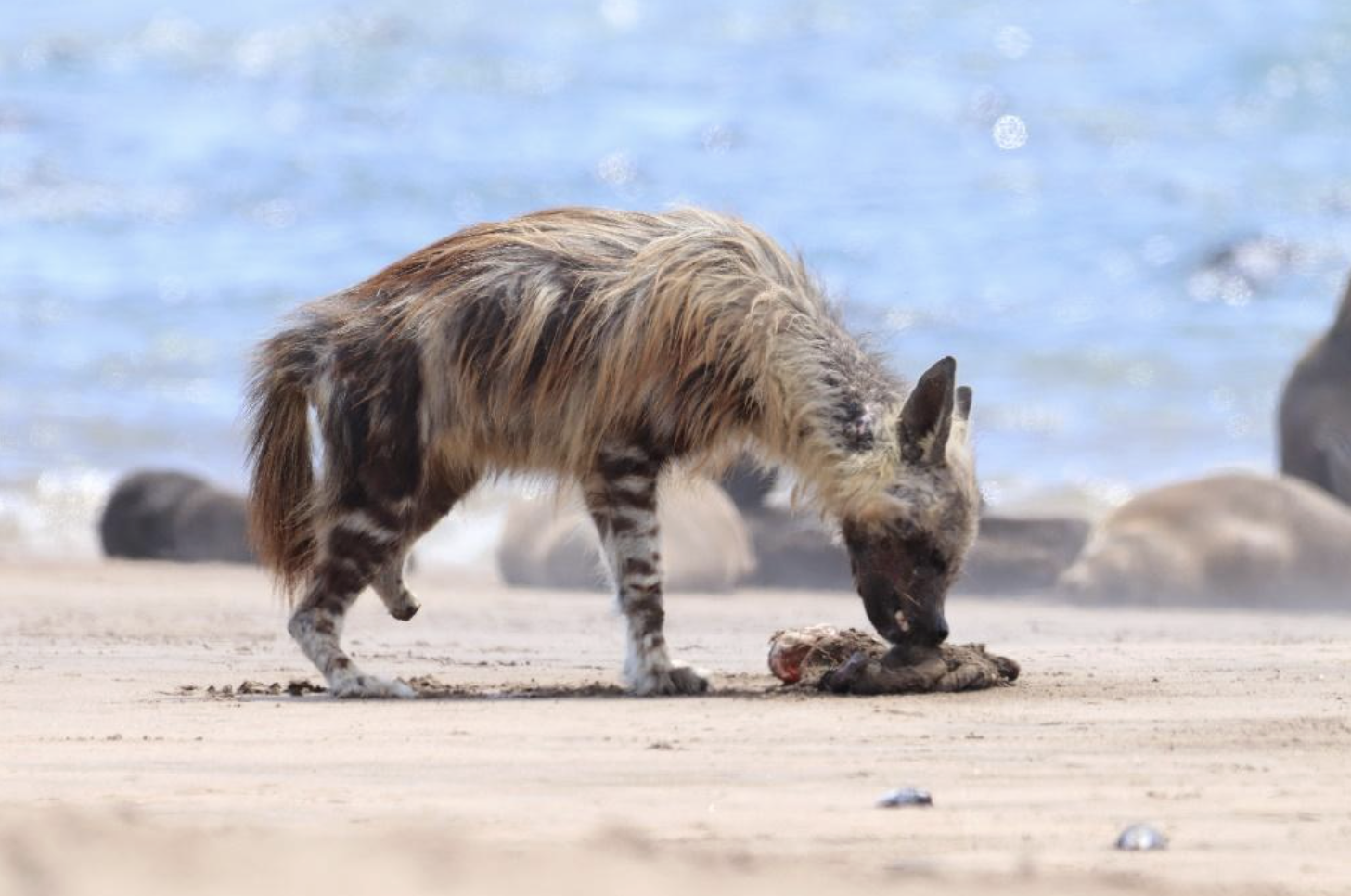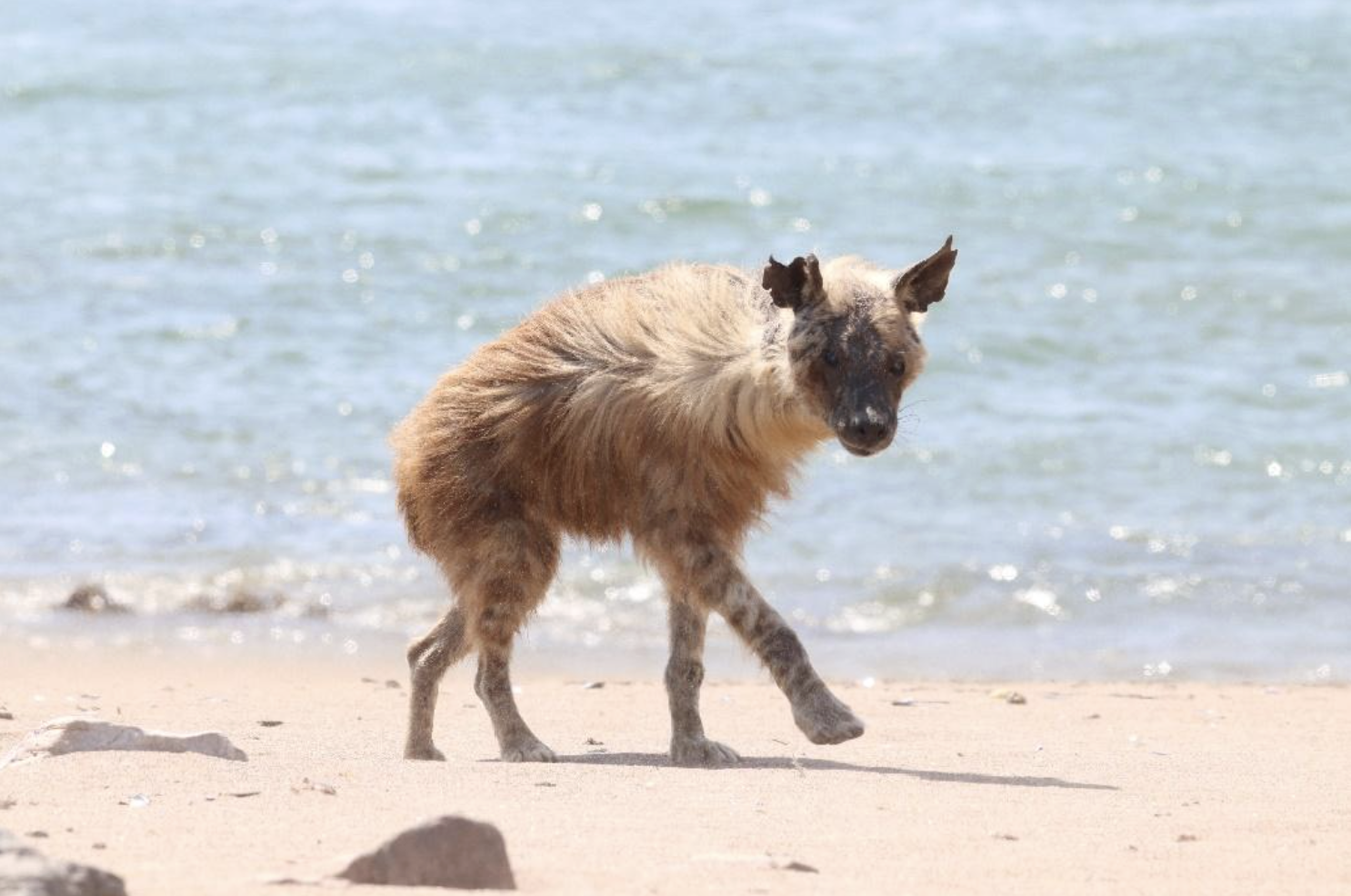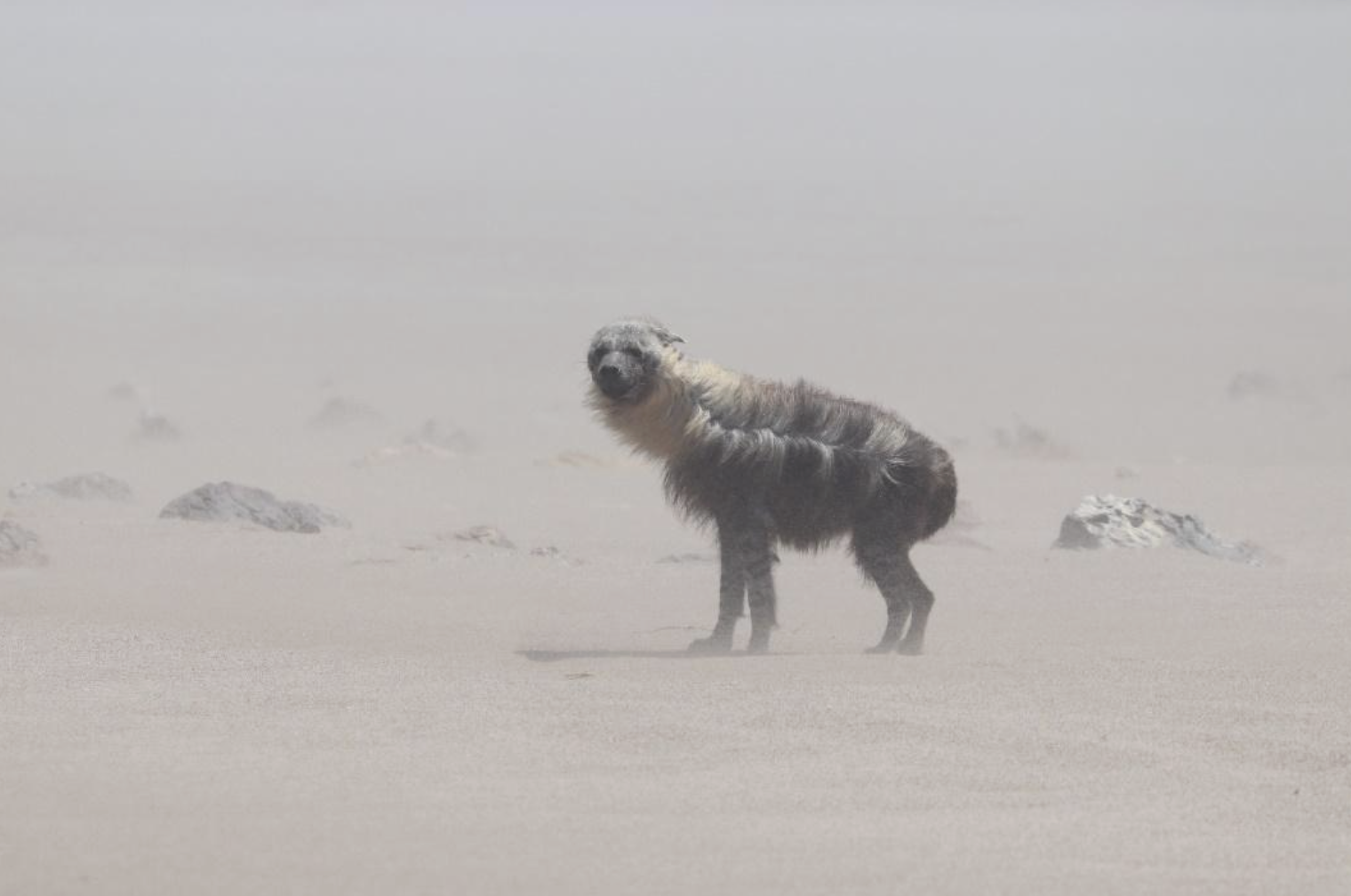Living life on the edge: Brown hyenas on Namibia's harsh coastline
Welcome to a Guest Blog with Marie Lemerle, a PhD student in South Africa, researching Brown hyena (Hyaena brunnea) on Namibia’s wild west coast. This remote and eerie coastline, famous for shipwrecks, is where the cold Antarctic Benguela current meets the hot desert. It’s a highly challenging environment for any animal to survive in, as Marie explains…
Hello! My name is Marie, I am a researcher for the Brown Hyena Research Project, in southern Namibia. Our project conducts scientific research on free-living brown hyenas and other carnivores in the Tsau//Khaeb (Sperrgebiet) and the Namib-Naukluft National Parks.
Currently, our main study site is a breeding colony of Cape fur seals. Because of the low food availability in the desert environment, brown hyenas and black-backed jackals mostly rely on the coast and on the seal colonies for food. Both species hunt and feed predominantly on seal pups.

Brown hyena ‘Nyala’ with the seal pup she killed.
Brown hyenas are territorial animals. However, due to the isolated food source, most brown hyenas walk long distances between their territory and the seal colony to obtain food (sometimes more than 50 kilometers). Therefore, brown hyena density is high around the seal colonies, and this results in lots of territorial fighting between individuals. We have observed that brown hyenas from different clans tend to avoid each other through temporal partitioning (one clan is only active at night, while others become diurnal). When fighting, brown hyenas bite each other’s necks. Many individuals in this area exhibit injuries, ear damage, and a lot of scars around their necks.

Brown hyena ‘Seoul’ exhibits scar tissue around her neck, and lost her foot in 2019.
 Brown hyena ‘Boston’ and her ear damaged from territorial fighting.
Brown hyena ‘Boston’ and her ear damaged from territorial fighting.
These injuries and ear damage are very helpful for us, as this helps us to recognize the different individuals. However, we always confirm IDs through leg stripes, which are unique for each individual and stay the same over time.
The weather conditions can be very harsh in this environment. This coastal area is known for its very strong winds and sand storms. Brown hyenas travel and look for food in these conditions of reduced visibility and flying sand. With sand going into their eyes, many individuals have turned almost completely blind over time (which is the case of Boston pictured above).

Brown hyena ‘Geneva’ visiting the seal colony during a sandstorm.
However, brown hyenas are very resilient animals. Even with injuries and blindness, they still travel long distances and hunt seal pups at the seal colony. They are also very important for the ecosystem, as they clean the beach from rotting carcasses and bring marine nutrients in the desert by carrying the carcasses inland to feed cubs at the den.
Beach and sand are nice substrates to collect tracks. Brown hyenas are the only large carnivores in the area, so their tracks can’t be confused with any other hyena species. While they are an elusive species in other areas, they can easily be observed around this seal colony. It would be very exciting and interesting to differentiate different individuals through their tracks. For example, it is difficult for us to do any observation and ID individuals at night. Fresh tracks in the morning could give us indications about night visitors to the food source. Further away from the seal colony, we could use tracks as a cost-free addition to camera traps and GPS collars to determine each individual territory and use of land.

Front and back tracks from brown hyena ‘Boston’.
Follow Marie’s work on social media:
Facebook: Brown Hyena Research Project
Instagram: @marielemerle






